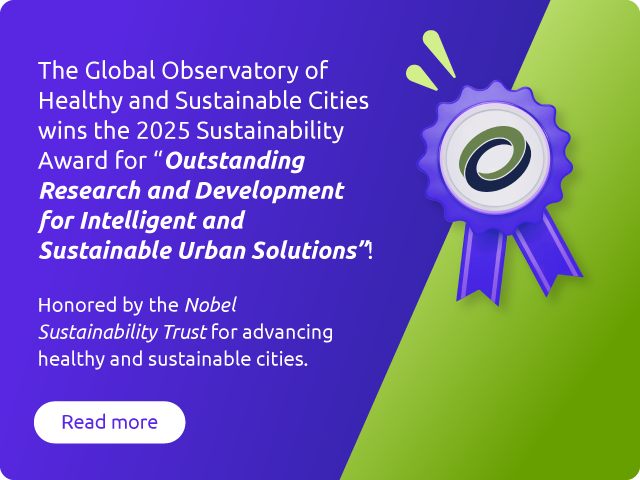Open Access Resources
We provide training and technical support for city teams to participate in the 1000 Cities Challenge. The Global Observatory aims to include the whole metropolitan area of cities, wherever possible. However, our indicator tools can be applied to any size or type of urban area (e.g. whole metropolitan areas, sub-areas within a larger metropolitan area), as relevant for your city. We expect that the 1000 Cities Challenge tools and procedures will evolve over time, to best support city teams to assess indicators for their city.
Follow these steps to learn and use our tools:
- Review the webinars
- Download and install the tools
- Review the training videos
- Go back to the tools website to run the software
Webinars
Learn about the indicators and how to use our tools for your city.
Our Tools
How to get started?
Attend or watch an information and/or training session
2
Develop a policy data collection plan.
- Identify who will collect the data
3
Identify relevant policy documents
4
Fill in the Policy Checklist
5
Validate your Checklist results with assistance from the 1000 Cities Challenge team
6
Upload the Checklist to the 1000 Cities Challenge software or contact info@healthysustainablecities.org for support
7
Generate and check the Scorecard and Report
8
Submit your city’s finalised Scorecard and/or Report to info@healthysustainablecities.org, for upload to the Global Observatory website.
2
Develop a policy data collection plan
3
Identify and obtain spatial data for your city
4
Follow the steps to configure your city region and analyze your data
5
Generate the outputs and reports
6
Validate data and reports with assistance from the 1000 Cities Challenge team
7
Submit your city’s finalised Scorecard and/or Report to info@healthysustainablecities.org, for upload to the Global Observatory website.
For further assistance contact info@healthysustainablecities.org or access our Frequently Asked Questions page
Data hub
Access the data for the cities showcased on our website

Additional resources
Liu, S., Higgs, C., Arundel, J., Boeing, G., Cerdera, N., Moctezuma, D., Cerin, E., Adlakha, D., Lowe, M. Giles-Corti, B. (2021). A Generalized Framework for Measuring Pedestrian Accessibility around the World Using Open Data. Geographical Analysis.
https://doi.org/10.1111/gean.12290 (Published journal version)
https://arxiv.org/pdf/2105.08814.pdf (Open access preprint)
Global Healthy and Sustainable City Indicator Study Collaboration – 25 Cities spatial indicators datasets: https://rmit.figshare.com/articles/dataset/Global_Healthy_and_
Sustainable_City_Indicator_Study_Collaboration_-_25_Cities_spatial_indicators_datasets/15072009


















